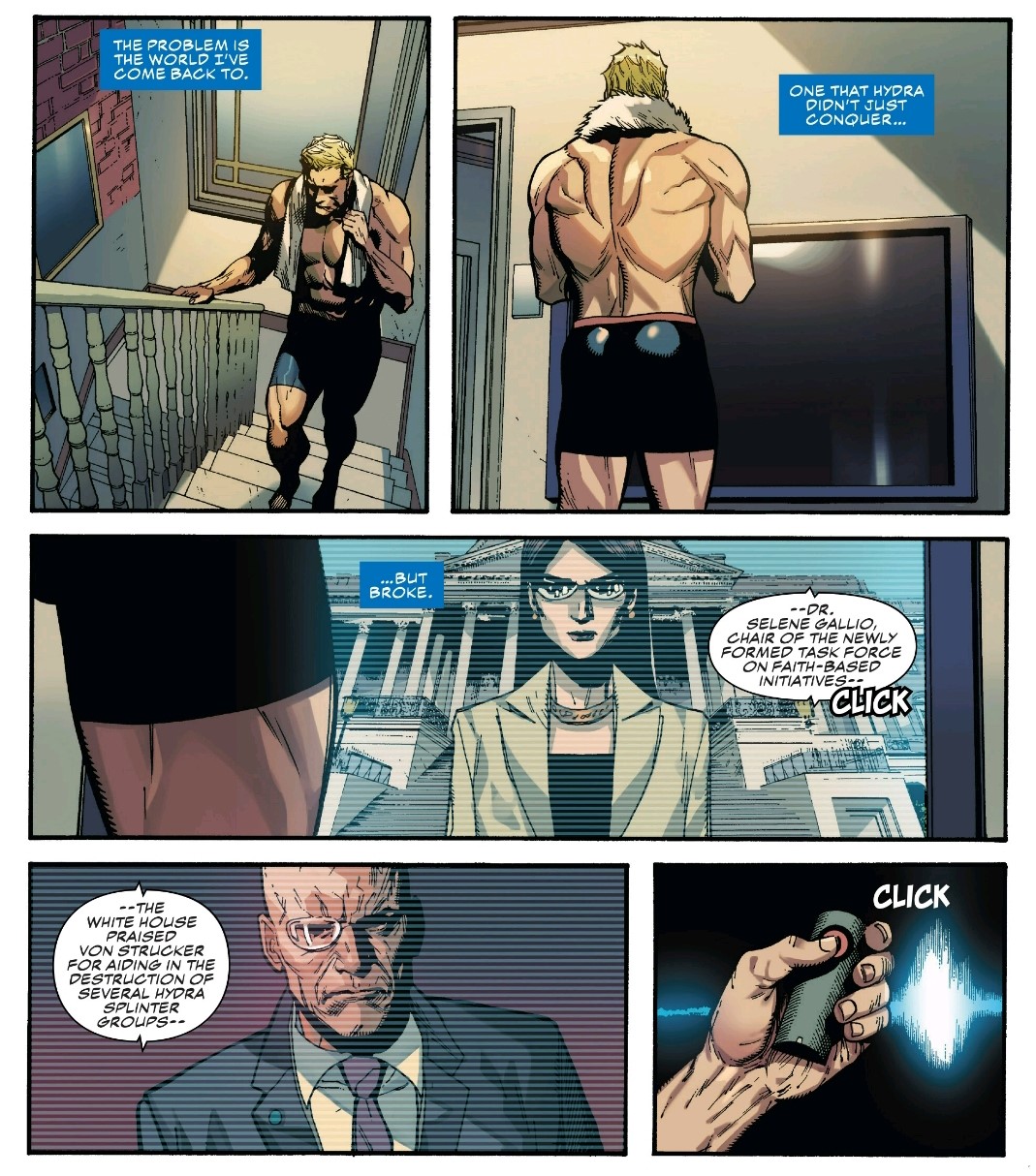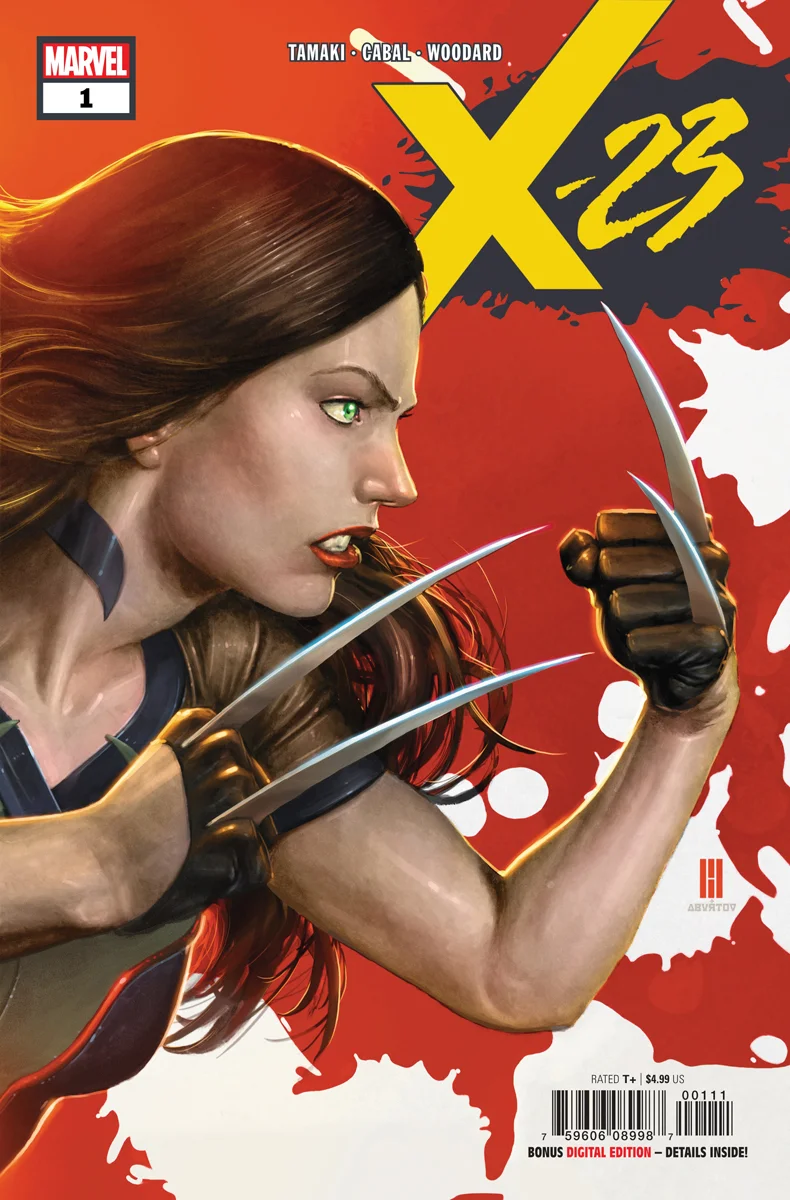Captain America #1 // Review
Ta-Nehisi Coates takes the reigns with Marvel’s July 4th relaunch of Captain America #1. The famed author of “We Were Eight Years in Power: An American Tragedy” begins work on the title amidst his heavily lauded run on another Marvel book, Black Panther. Renowned for his political commentary, from the start, Coates injects Captain America with topical content long missing from the title; tackling, head-on, the aftermath of last year’s highly criticized “Hydra Cap” storyline, Secret Empire, which saw an evil iteration of Captain America take over the country following the revelation that he had eternally been a Hydra (Nazi sub-faction) double agent. Secret Empire’s poorly executed allegory for the Trump presidency was mostly eschewed by writer Mark Waid in Captain America’s most recent run. However, Coates makes the aftermath of Secret Empire a core tenant of his new narrative, with Steve Rogers facing blame for betraying his country, and struggling to cope with a warped, broken version of the America he loves and represents, tarnished in-part because of his own actions.
Ramifications of Secret Empire are seen further through the introduction of a cabal of villainous political actors, known as The Power Elite. While the collaboration is not named this issue, solicitations for Captain America #1 read, “…a new enemy is rising! Who are the Power Elite? And how do they intend to co-opt and corrupt the symbol that is Captain America?” The phrase “The Power Elite” stems from the 1956 book by the same name, written by sociologist C. Wright Mills, which examines interconnected societal manipulation and control by political, corporate, and military leaders, and was influenced heavily by Franz Leopold Neumann's book, “Behemoth: The Structure and Practice of National Socialism,” which in turn discusses how Nazism rose out of a Democratic Germany. Mills has briefly summarized his work:
“Who, after all, runs America? No one runs it altogether, but in so far as any group does, the power elite.”
Playing off themes established in “The Power Elite,” Coates entrenches established adversarial entities as influential figures in the political landscape formed following Hydra Cap’s actions. Paralleling America’s current kakistocracy, psychic vampire and X-Men villainess, Selene, has been appointed chair of a newly formed task force on faith-based initiatives; former Nazi officer, Baron Wolfgang von Strucker, is praised as a national hero for helping snuff out remnants of Hydra, an organization he once ran; and longtime Hulk nemesis, General Thaddeus “Thunderbolt” Ross, is paroled from military imprisonment in exchange for a high ranking Presidential appointment. A fourth member of the presumed Power Elite is found in the mysterious Alexa, who is revealed to be Russian in heritage, a possible possessor of teleportation powers, and a co-conspirator in Selene’s plot to destroy and supplant Hydra.
While the machinations of the Power Elite bookend this issue, the primary plot finds Captain America responding to a mass shooting on the National Mall perpetrated by a cadre of cyborg clones, each wearing the flag emblazoned face of notorious ne’er-do-well, Nuke. The Nuke duplicates name Captain America a traitor amidst their murderous mayhem, their rampage, cloaked in a veneer of patriotism, paralleling the damage done previously by Hydra Cap and currently being perpetrated by America’s present administration.
In addition to Ta-Nehisi Coates, the relaunching of Captain America brings to the title famed artist Leinil Francis Yu, best known for his work on New Avengers and Supercrooks. Yu’s unique style, which he’s described as “dynamic pseudo-realism” provides the issue with an iconic look that’s sleek, yet rugged and textured. His panels are cinematic in scope, and he’s able to amicably convey a wide spectrum of distinct characters, ranging vastly in age, race, gender, and body type. Imposing and larger than life, Yu’s Captain America is a powerfully depicted archetypal iteration of “The Living Legend.”
In an Atlantic article prefacing his work on the title, Ta-Nehisi Coates spoke at length about taking on the character of Captain America and his mindset:
“Writing, for me, is about questions—not answers. And Captain America, the embodiment of a kind of Lincolnesque optimism, poses a direct question for me: Why would anyone believe in The Dream? What is exciting here is not some didactic act of putting my words in Captain America’s head, but attempting to put Captain America’s words in my head. What is exciting is the possibility of exploration, of avoiding the repetition of a voice I’ve tired of.”
Evident both in this excerpt and in Captain America #1 is Coates’ frustration with the current state of American affairs. With renowned villains occupying seats of power, unspeakable acts being committed under the camouflage of patriotism, and trust in (Captain) America plummeting to untold depths, the question of “Why would anyone believe in The Dream?” is more poignant and pervasive than ever. In an America growing more terrifying and unfamiliar every day, Ta-Nehisi Coates has offered, not an answer to that question, but an opportunity to explore it. In Captain America #1 Coates builds a world eerily similar to our own and extends an invitation to join him on a journey through the eyes of Captain America, to remember what it truly means to be an American and re-discover why the American Dream is worth fighting for.











